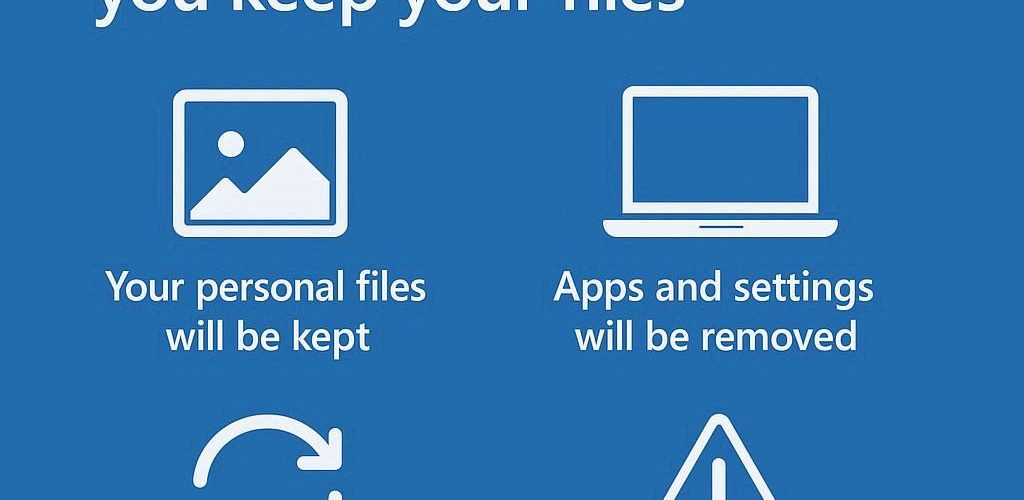If you’re considering resetting your Windows 11 system but want to retain your files and user data, you’re not alone. Many users find themselves in need of a refresh to improve performance or troubleshoot persistent issues. The process, however, does raise some questions, particularly regarding what “keeping my files” actually entails.
Understanding the Reset Process
Windows 11 comes with a built-in reset feature that allows you to restore your system to its original state. When you choose to reset your PC, you typically have two options: “Keep my files” or “Remove everything.” As the names suggest, the first option is intended to maintain your personal files while the second wipes everything clean, including apps, settings, and user accounts.
What Does “Keeping My Files” Mean?
When you select “Keep my files,” Windows will preserve personal files stored in user directories, such as Documents, Pictures, Music, and Downloads. However, it’s important to note that this option does not keep your installed applications or system settings. This means any software that you have installed will be removed, requiring you to reinstall them after the reset.
Regarding user accounts, privileges, and passwords: the reset process should typically preserve user accounts. Your account name, privileges, and settings (like desktop background, display preferences, etc.) are usually maintained; however, it’s wise to review this before proceeding. Passwords saved in the password manager or through your browser may not be directly affected, but saved application data will be deleted if those applications themselves are uninstalled.
Is It Worth It?
Whether or not a reset is worth it depends on your current situation. Here are a few considerations:
- Performance Improvement: If your system has been running slowly or experiencing frequent crashes, a reset can often provide a noticeable improvement. Over time, accumulated programs and files can bog down performance, and a reset eliminates this bloat.
- Troubleshooting Issues: For persistent issues or malware infections, resetting your PC may resolve problems that software repairs cannot. By resetting, you’re providing a clean slate to work from.
- Backups Are Key: Before proceeding with any reset, it’s always prudent to back up your important files separately. While the reset process is designed to keep your files, there’s always a risk of something going wrong.
- Expectations for User Data: While you can generally expect to retain your user accounts and privileges, always have contingency plans in place. For critical accounts, consider writing down passwords or ensuring they are retrieved through a password manager before the reset.
In conclusion, resetting Windows 11 while opting to keep your files can be a beneficial step if you’re seeking to mitigate issues or improve overall performance. Just proceed with caution, ensuring you have backups and a clear understanding of what will be retained and removed during the process. This approach allows you to maintain essential user data while giving your system a refreshing start.





Add comment